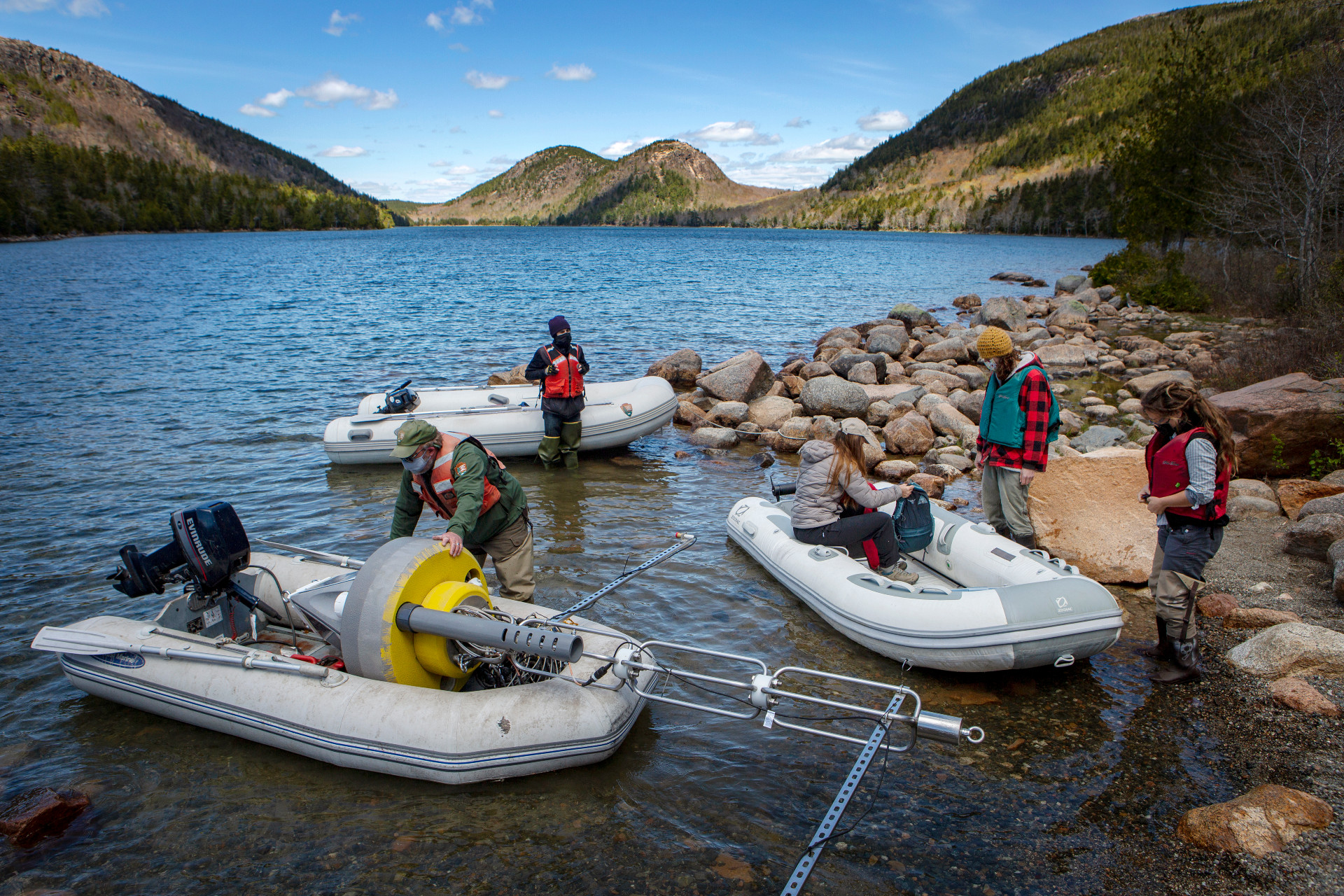Jordan Pond’s High-Resolution Monitoring Buoy
September 26th, 2022
September 26th, 2022

Bill Gawley, Air and Water Program Manager at Acadia National Park, leads the launch of the Jordan Pond water quality
monitoring buoy. (Photo by Ashley L. Conti/Friends of Acadia)
BY BILL GAWLEY
Editor’s Note: This article is part of a series highlighting the Jordan Pond Water Quality Project and the monitoring buoy that continuously records physical and chemical conditions in the pond. Read the series at friendsofacadia.org/buoy
Despite the almost irresistible temptation, literally diving into the cool, clear waters of Jordan Pond may not be the best idea. For starters, swimmers-and even waders-risk incurring a hefty fine for violating a municipal “No Body Contact” ordinance put in place in 2009 to safeguard this drinking water source for the town of Seal Harbor.
The Mount Desert Water District is one of many diverse stakeholders in the Jordan Pond watershed, and the swimming ban is only a small part of the comprehensive efforts to better understand and protect this unique, valuable, and iconic resource.
I emphasize the goal of understanding. To develop effective protection, mitigation and adaptation strategies, one must first learn the intricate workings of this complex system. That includes how to identify and evaluate the magnitude of threats. In 2013 Friends of Acadia began funding the Jordan Pond Water Quality Project, which is implemented by my Acadia National Park Air-Water Resource team and researchers from the University of Maine’s Climate Change Institute.
The project builds upon five decades of long-term monitoring and scientific studies by park staff, academic institutions, state environmental agencies, and local organizations to investigate changes occurring in Jordan Pond’s water chemistry and physical properties in response to improving air quality, extreme weather events, long-term climate shifts, and increasing park visitation.

Acadia National Park Physical Science Technician Jake Van Gorder collects data for water quality monitoring for the monthly water quality check in Jordan Pond at the Jordan Pond buoy. (Photo by Sam Mallon/Friends of Acadia)
Blooms of algae toxic to humans, pets, and wildlife (known as Harmful Algal Blooms, or “HABs”) and invasive aquatic plant infestations have just recently begun occurring in Hancock County lakes, and project staff are participating in local, state, and national prevention and response programs to try to address these issues before they reach the park.
Thanks to continued funding from Friends of Acadia, a high-resolution monitoring buoy was recently launched in Jordan Pond for the ninth year of data collection. The Jordan Pond Water Quality Project goals encompass more than simply amassing information. They also include engagement and collaboration with park visitors, residents, the Water District, the scientific community, and all other stakeholders to instill appreciation of and promote science-based protection for Jordan Pond, often referred to as one of the “crown jewels” of Acadia National Park.
For a deeper dive (figuratively!) into Jordan Pond and the Jordan Pond Water Quality Project, visit jpbuoy.com.
BILL GAWLEY manages the Air and Water Resources program at Acadia National Park and has been monitoring Acadia’s air and water quality since 1994.
Learn more about the monitoring buoy in Jordan Pond. Video by Sam Mallon/Friends of Acadia